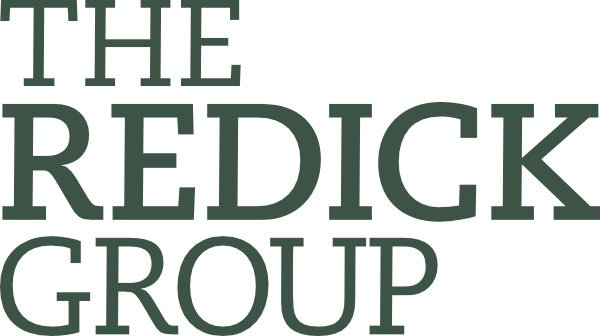Ready, credible, and differentiated
The roles of Chief Marketing Officer (CMO) and Chief Communications Officer (CCO) have never been more vital or complex. Today’s CMOs and CCOs are charged not just with messaging, but with driving measurable business impact, protecting organizational reputation, and guiding transformation at the highest levels.
As the expectations for marketing and communications executives have evolved, so too have the challenges of standing out, building credibility, and advancing to the next stage of a marketing leadership career. Yet, many CMOs rely on bloated versions of "résumés they first wrote out of grad school—documents that no longer capture their true leadership value. After 20+ years, what’s needed isn’t just an update, but an entirely new approach to executive resume writing and career brand development
The new era of marketing and communications leadership
“Remember when I texted saying I’d been approached on LinkedIn for my first board director role? That was our handiwork. I can’t believe you’ve been with me since my marketing director days. ”
The journey to the C-suite for marketing and communications professionals is no longer linear. Historically, CMOs were seen as creative visionaries, focused on advertising and brand management, while CCOs managed press relations and corporate messaging. Today, these roles demand much more: digital fluency, data-driven strategy, crisis management, and the ability to influence both internal and external stakeholders.
For CMOs, the shift from traditional advertising to digital transformation has been profound. The modern CMO must balance creative leadership with analytical rigor, often acting as both brand steward and growth architect. In public companies, this means navigating regulatory scrutiny and board-level accountability, while in private or PE-backed firms, the focus often shifts toward rapid scaling and value creation.
CCOs, meanwhile, have moved from the periphery to the center of organizational strategy. No longer limited to media relations, today’s communications leaders are strategic advisors, shaping reputation, managing crises, and driving stakeholder engagement across multiple channels. The rise of social media and the 24/7 news cycle have made reputation management more complex, requiring a proactive, data-informed approach.
-
I’m Jared Redick, and in 2010, longtime clients began asking if I could write a board resume, board bio, and LinkedIn profile as they retired or approached the most senior levels or their careers.
The question arose from the common answer board seekers get when querying their networks for potential board roles: “Sure, send me your board resume.” Or sometimes it’s, “Sure, send me your board bio.”
More than 60% of my client load was already in the C-suite, but crafting a board portfolio required me to reach back into my own early career in retained executive search.
But I knew I needed to upskill myself and those clients gave me the time to do just that.
Since then, I’ve developed quite a few board portfolios for clients and have noticed a trend in my sample set: Most senior executives haven’t entertained the implications of board service. They simply know they want to do it.
There’s a lot more to board directorships than meets the eye.
Before sitting down to create your board materials—before trying to express the value you bring to a board search and to a company and its board of directors—it’s important to take stock of why, how, and when you want to move into a search for a board role. I say “search” because you want to take the same strategic approach that a search firm does, just in reverse.
I mention this because if we work together, we may discuss these matters as we flesh out your board identity. Especially if you’re aiming for first-time board service.
-
Senior executives face a complex dilemma as they contemplate a career transition in board service. On one hand, board service offers a chance for personal and professional growth, allowing top performers to leverage their skill set in new ways, gain exposure to varied governance processes, and expand their network. In some cases, companies have begun to recognize the value of their senior leaders serving on other companies' boards. Also, the push for increased diversity in the background of directors has slightly increased board turnover, creating more room for potential candidates.
That said, the path to corporate directorship is often mysterious and intimidating. They must carefully evaluate whether they can successfully transition from being an operator to an advisor, as the board's role is to oversee and guide management rather than run the company day-to-day. This shift requires a different mindset and skill set, including the ability to ask probing questions without overstepping into management's domain and to influence without direct authority. Further, potential candidates who hold parallel leadership roles in their own companies must consider the time commitment and agility required for board service, which has increased significantly in recent years.
Executives must also weigh the risks and rewards of a board service. A board role can enhance an executive’s professional reputation and provide new insights and experiences, but a board role also comes with potential legal liabilities and increased scrutiny. Today’s board director must carefully assess whether their motivations, skills, and experiences align with the needs of their target boards. Ultimately, the decision to pursue board membership requires a great deal of consideration of one's career goals, personal values, and ability to meaningfully contribute to a company's governance and strategic direction.
Why executive identity matters
“I ran our work by a recruiter I know. Her response was, “Oh my god. I had no idea this was possible.””
Develop board-ready materials within established norms
With expanded responsibilities comes a new imperative: to craft an executive identity that reflects your full value. Your executive brand is how you are perceived by boards, investors, peers, and future employers. It’s not just about what you’ve done, but how you communicate your impact and vision for what’s next.
Many CMOs and CCOs find themselves facing a credibility gap. Despite their centrality to business outcomes, marketing and communications leaders are often seen as cost centers rather than revenue drivers. This perception persists even as the data shows otherwise. The challenge is not just to deliver results, but to present your story in a way that resonates with decision-makers and positions you as a strategic business partner.
For executives navigating career transitions—whether moving from a corporate environment to a solo consultancy, or bridging the gap between different chapters of their professional journey—the need for a coherent, compelling narrative becomes even more pronounced12. During these pivotal moments, articulating a clear value proposition and demonstrating how past experiences translate into future impact is essential for building credibility and momentum.
The landscape: public vs. private, traditional vs. modern
The context in which you operate shapes your executive identity. In public companies, CMOs and CCOs must demonstrate transparency, manage complex stakeholder relationships, and align marketing or communications strategies with quarterly performance expectations. The scrutiny is intense, and the margin for error is slim.
Private company leaders, especially those in high-growth or PE-backed environments, face a different set of pressures. Here, agility, entrepreneurial thinking, and a focus on scalable growth are paramount. The ability to build departments, implement new technologies, and drive transformation often outweighs the need for regulatory navigation.
Regardless of context, the most successful marketing and communications executives are those who can articulate their unique blend of creative, analytical, and leadership skills. They are able to show—not just tell—how they drive business outcomes, build resilient teams, and protect organizational reputation.
Our approach, offerings, and what to expect
Building a credible executive identity as a Chief Marketing Officer or Chief Communications Officer requires more than a polished resume or LinkedIn profile. It’s about weaving your experiences, achievements, and leadership philosophy into a cohesive narrative that aligns with your target audience—whether that’s a board of directors, a new employer, or your current executive team.
Resume & Bio Development
Your CMO or CCO portfolio should reflect the same experience, intellect, and discretion that your peers will expect from you when interacting with you in the boardroom. If we work together, we’ll work hard to make sure you’re ready to toss your hat in the ring.
-
Define target companies and map them to industry expertise or sector knowledge
Bring forward leadership experience consistent with the needs of a public or private company
Contextualize your experience within the size, market position, growth stage, and international footprint of companies where you’ve worked, or companies you’ve advised
Emphasize your ability to navigate complex external factors such as economic shifts, industry disruptions, social changes, and significant corporate events (e.g., mergers, acquisitions, restructurings)
Articulate your experience with complex matters such as board structuring and committees, conflicts of interest, activist defense, and executive misconduct
Present experience related to executive hiring, compensation, and succession planning
Showcase experience with business challenges (e.g., digital transformation, cybersecurity, ESG), changes in regulatory frameworks (e.g., Dodd-Frank, Sarbanes-Oxley, PSD2, GDPR), and other emerging trends such as generative AI adoption, geopolitical uncertainties, and evolving stakeholder expectations
Identify and articulate the specific dimensions of leadership that will add value
Narrate diversity considerations in terms of skills and background, not just gender and race
Highlight thought leadership and industry reputation, including presentations, publications, patents, and other credibility signals.
List other board service (e.g., nonprofits, private companies), committee leadership, and professional association memberships
LinkedIn Profile Optimization
Your digital presence as a CMO/CCO candidate should be tuned to enhance your visibility. It should also be developed with an extra layer of sensitivity. If we work together, I'll help you architect a LinkedIn profile that serves you across every aspect of your professional life.
-
Condense, elevate, and sometimes reconceive the confidential narrative we developed for your resume and so it’s appropriate for public evaluation
Develop an algorithm-centric keyword strategy to anticipate the behaviors of recruiters who are searching for someone with your background
Establish a tone of voice consistent with your experience and personality, as well as the expectations of your target companies
Use strategic language to map your current activities to your future plans
Maintain discretion if you’re planning to explore roles confidentially and need to preserve sensitive professional relationships
Thinking about a career move? Choose an entry point.
At a career crossroads?
Career decision-making, résumé writing, and LinkedIn positioning—helping leaders move on their terms.
Potential at every stage
Career coaching for today’s leaders and tomorrow’s visionaries—reframing pasts, transforming futures.




